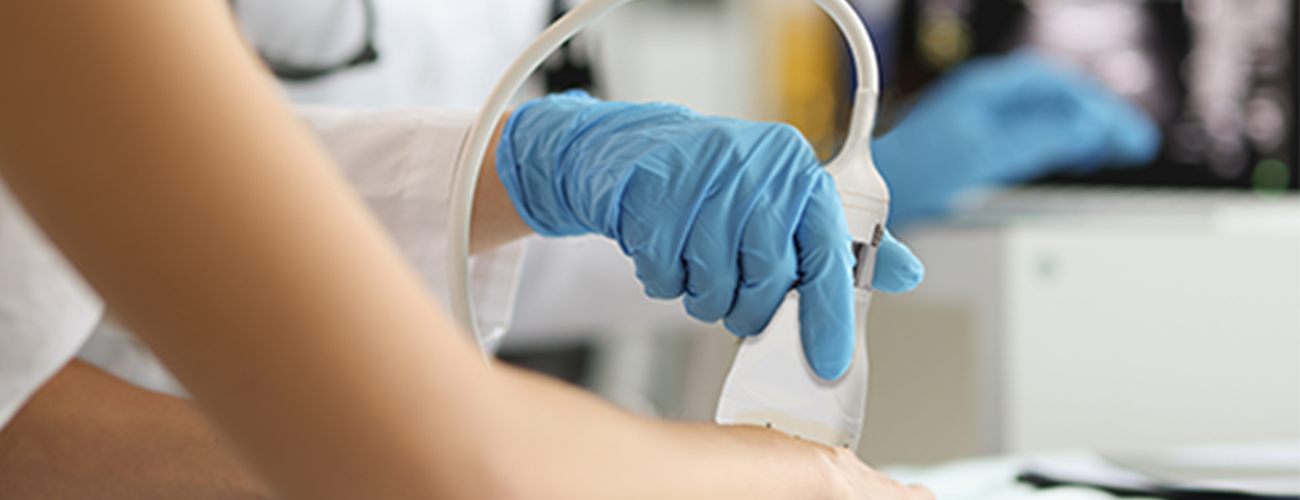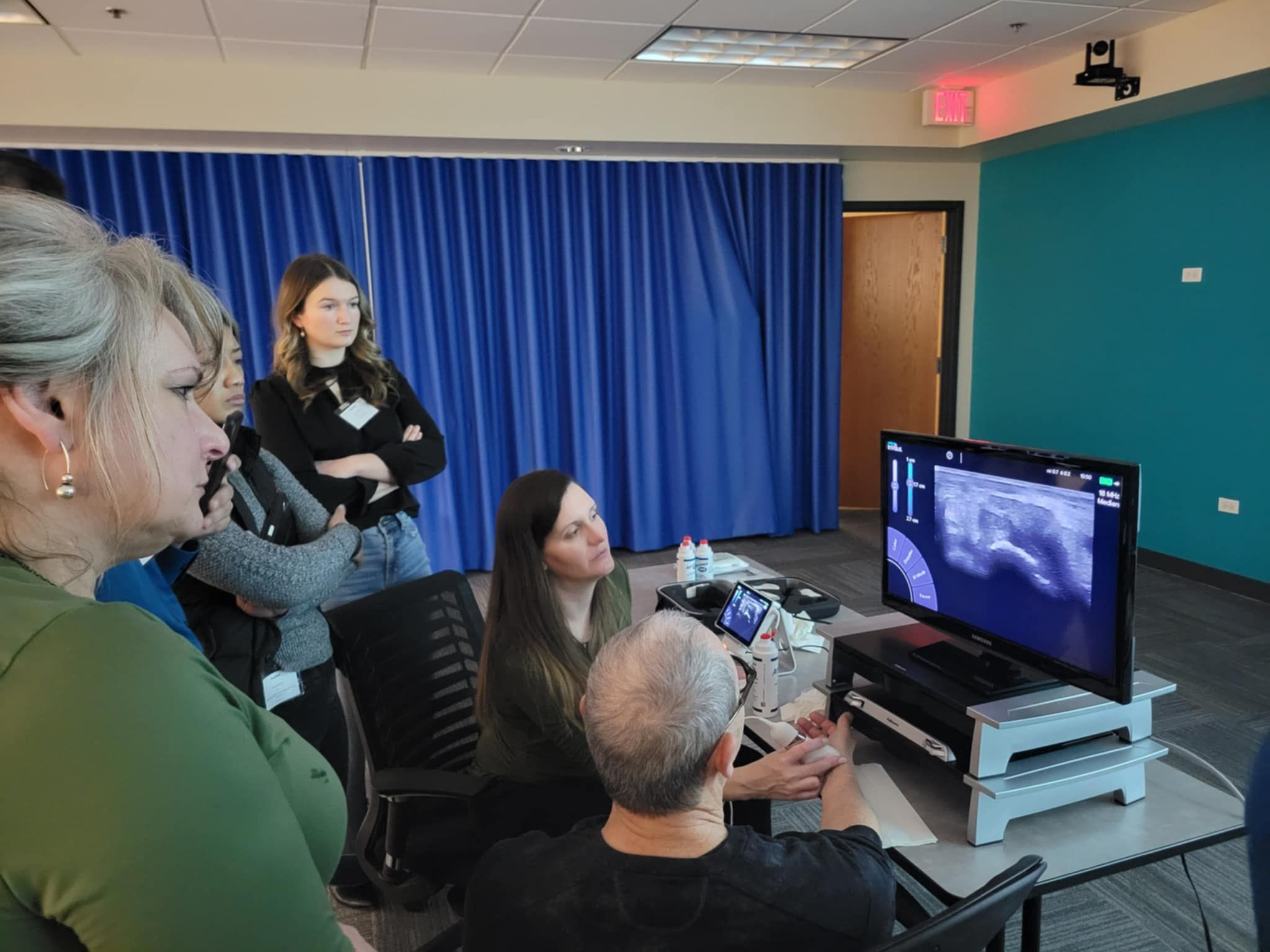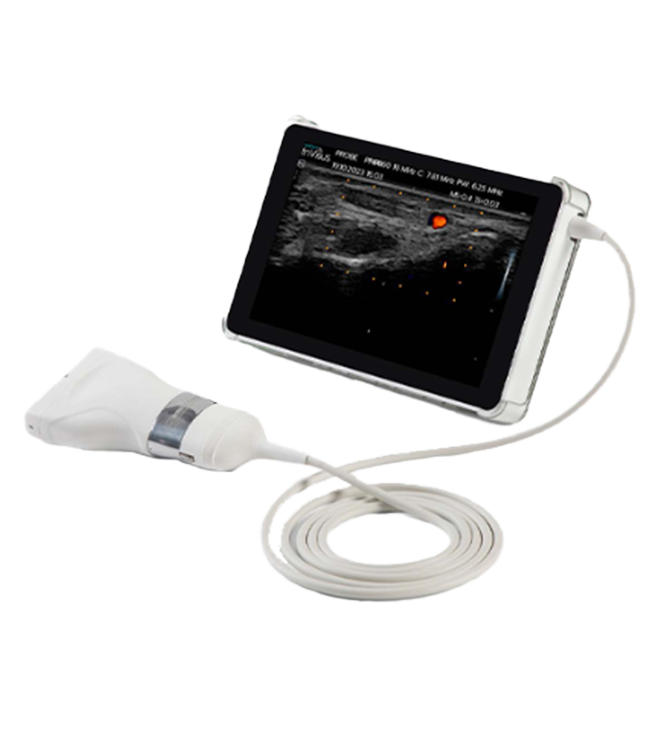Neuromuscular ultrasound technology from Natus transforms one skeptic into a believer

For decades, electrodiagnostic tools like EMG and nerve conduction studies have been the gold standard for evaluating nerve and muscle disorders. But in recent years, neuromuscular ultrasound (NMUS) has emerged as a powerful complement—offering real-time, high-resolution imaging that adds a new layer of clarity and confidence to diagnosis. Still, some experienced clinicians remain skeptical about what ultrasound can truly reveal. That was the case for Elizabeth Bekas, Manager for the Neurophysiology Department at Endeavor Health, until one unexpected training session with Natus’ InVisus Pro changed everything.

A seasoned neurodiagnostic technologist, Elizabeth Bekas had more than 26 years of experience when she volunteered as a “patient” during a hands-on training session using InVisus Pro, Natus’ innovative neuromuscular ultrasound solution. Just minutes later, she saw something that several EMG tests had failed to show: a clearly abnormal nerve in her hand. It was a moment that changed everything for this self-described skeptic.
The Manager of the Neurophysiology Department at Endeavor Health, a large community health system serving the Chicago area, Elizabeth had always questioned what neuromuscular ultrasound could add to standard electrodiagnostic testing. “I kept it to myself,” she says, “but when patients brought up neuromuscular ultrasound, I secretly wondered what it could possibly show that EMG or nerve conduction studies couldn’t. I didn’t believe it provided any additional value to the EMG and NCS testing we already do.”
Hoping to earn some CEUs and take insights back to her team, Elizabeth didn’t expect to change her opinion about the diagnostic tool when she attended the Natus Neuromuscular Ultrasound training session conducted by Dr. Chelsea Shugars. Little did she know that session, and the technology she experienced firsthand, would dramatically change her perspective on neuromuscular ultrasound and its important role as a complement to more traditional electrodiagnostic tools.
Making a visual connection will help patients understand their condition, and hopefully make better, more confident, clinicial decisions.
Elizabeth was surprised, and a bit shocked, when the training session using InVisus Pro immediately confirmed something she had long suspected, but that other electrodiagnostic exams had never been able to definitively prove. She had been experiencing symptoms of carpal tunnel in her own hand for years. Yet so far, nerve conduction studies had shown only borderline abnormalities.

Remarkably, when she used the device on herself, she immediately saw an ulnar nerve measuring 17mm², more than double the normal size. “That was the moment,” she recalls. “My condition was much worse than previous tests had shown, and I could see it right there on the screen.” For Elizabeth, the InVisus Pro offered the visual evidence she’d never seen before, adding another layer of clarity and confidence to her diagnosis. Now, it was clear that for her patients with suspected entrapment syndromes, nerve trauma, or early-stage conditions like carpal tunnel, the added visibility of NMUS could be critical.
Elizabeth describes the training session with InVisus Pro as nothing short of eye-opening. Other neurodiagnostic tools like EMG often require interpreting subtle differences in electrical activity. “Every person is slightly different, so it can be harder to confirm abnormalities,” Elizabeth says. “Maybe I’m in the wrong position, or the setup isn’t quite right. There are always questions.” That’s why adding a tool like InVisus Pro to the neurodiagnostic suite changes the dynamic profoundly.
While the learning curve of NMUS is often cited as a challenge, Elizabeth finds it manageable, especially for experienced EMG technologists. “For us, it’s easier because we already know the nerve pathways,” she says. Her advice is for technologists to start with abnormal cases, noting that it is easier to recognize the nerve’s shape and texture when something’s clearly wrong. “With ultrasound, when it’s abnormal,” she says, “it’s screaming at you from the screen.”
Elizabeth is certain NMUS will positively change the experience for patients as well as clinicians. Nerve conduction studies can be painful, she says, and some people have trouble getting through the full study. Others have heard NCS horror stories and are apprehensive or are so terrified of needles that sedation is required to complete the test. “It allows hospitals and clinics to offer an alternative to uncomfortable NCS testing without needing to send patients elsewhere, while still giving us the information we need for diagnosis.”

The portability of the InVisus Pro technology was another big revelation for Elizabeth. “You can take it out, do the scan, and move on. It doesn’t need setup or a lot of equipment,” she says. This kind of accessibility has many implications. Whether in outpatient clinics, bedside settings, or even rural locations, NMUS helps bring diagnostic quality directly to the patient, without delays or logistical hurdles.
NMUS also changes the conversation between clinician and patient. “You can show them what you’re seeing,” Bekas says. “Making a visual connection will help patients understand their condition, and hopefully make better, more confident decisions.” It’s a moment of shared understanding that turns a clinical exam into a collaborative experience, helping patients feel informed, respected, and included in their care.
In addition to helping with diagnostic precision, NMUS is also a tool that is used to guide needle injection, which can greatly minimize discomfort from too many needle sticks. “In these situations,” Elizabeth says, “neuromuscular ultrasound offers another option without the pain.” With real-time, high-resolution imaging, NMUS helps clinicians visualize needles during ultrasound-guided procedures. This improves accuracy and minimizes needle sticks, especially helpful for children, and people with high pain sensitivity or anxiety.
After more than two decades in the field, Elizabeth Bekas didn’t expect to be surprised. “I’m an old-school technologist. Unless I see it, touch it, smell it, you can’t convince me.” After her experience in just one training session, however, she’s a convert. Today, Elizabeth recommends NMUS to colleagues and hopes neurologists and other clinicians understand how the technology provides a powerful complement to conventional EMG. And her personal experience has had lasting impact. “Knowing and seeing I have an abnormal nerve, I’ll be more open to surgery because I know it’s not temporary. Like many other patients, I’m ready because I’ve seen the problem with my own eyes.”
NMUS isn’t just a tool for faster or more comfortable electrodiagnostic tests. New integration capabilities with systems like Natus Elite 2 EMG Software means InVisus Pro can offer a seamless, documented view of the patient’s journey, from first scan to final treatment plan. Ultrasound images, notes, and measurements can be incorporated directly into EMG reports, eliminating the need for separate workflows or duplicate documentation.
For Elizabeth Bekas, that’s the future of neuromuscular care: accurate, integrated, and accessible for both patients and clinicians. “I probably would have rolled my eyes before,” she says. “But now, having seen neuromuscular ultrasound in action, the tool is simply amazing.”
 InVisus Pro Neuromuscular Ultrasound
InVisus Pro Neuromuscular Ultrasound
Invisus® Pro is an advanced, portable neuromuscular ultrasound system that delivers high-resolution imaging of nerves and muscles at the point of care. Designed to seamlessly integrate with EMG workflows, it enhances diagnostic confidence by providing real-time visualization alongside electrodiagnostic data. Clinicians can use Invisus Pro as a standalone tool or in conjunction with any EMG/NCS system, with the ability to embed ultrasound images directly into EMG reports. The result is a clearer clinical picture that supports more confident, informed diagnoses. Learn more about Invisus Pro and how it can elevate your clinical capabilities.
049250 RevA